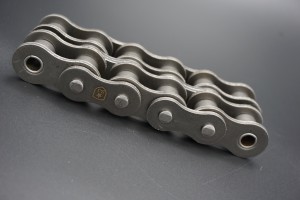Roller chains are an essential part of a wide variety of industrial applications ranging from power transmission systems to conveyors. Among the different types available in the market, Type A and Type B chains are the most commonly used. While they may seem similar at first glance, there are major differences between the two. In this blog, we will explore the different characteristics and applications of Type A and Type B roller chains, clarifying which chain is best suited for specific requirements.
Type A roller chain:
Type A roller chains are primarily known for their simplicity and symmetrical design. This type of chain consists of evenly spaced cylindrical rollers. The rollers transmit power efficiently and minimize friction during operation. Thanks to its symmetrical construction, the A-chain can transmit power in both directions, providing flexibility and convenience.
In terms of application, A-chains are widely used in conveying systems, material handling equipment and manufacturing machinery. Due to its versatility, A-chains are suitable for environments with moderate loads and speeds. When properly maintained, these chains offer exceptional durability and reliability, making them a popular choice across a variety of industries.
Type B roller chain:
Unlike Type A chains, Type B roller chains are designed with additional features to enhance their performance in demanding applications. Type B chains have slightly thicker extended link plates, allowing them to withstand heavy loads and higher speeds. This extra strength is especially beneficial for applications involving conveying heavy materials or equipment with high inertia.
Type B chains may vary slightly in size from Type A chains, with the former having a larger pitch or roller diameter. These changes allow B-chains to withstand the stresses caused by heavier loads and provide increased durability.
Type B chains are widely used in machinery and equipment operating in harsh conditions such as mining, construction and heavy material handling industries. The robust design of Type B chains and their ability to withstand harsh operating environments make them integral to the successful operation of heavy machinery.
Although Type A and Type B roller chains may look similar, they are designed differently to meet different application requirements. A-frame chains are versatile, reliable, and suitable for moderate loads and speeds. On the other hand, B-chains prioritize strength and durability, making them ideal for heavy-duty applications involving high loads and speeds.
Whether you are designing a new system or looking to replace your existing roller chain, determining the proper type is critical to achieving optimum performance. By understanding the unique properties and applications of Type A and Type B chains, you can make an informed decision to meet your specific needs.
Remember that regular maintenance and lubrication play a vital role in ensuring the life and effectiveness of your roller chain. Selecting the correct type and handling it carefully will undoubtedly contribute to the smooth operation and efficiency of your machine.
Post time: Aug-21-2023

